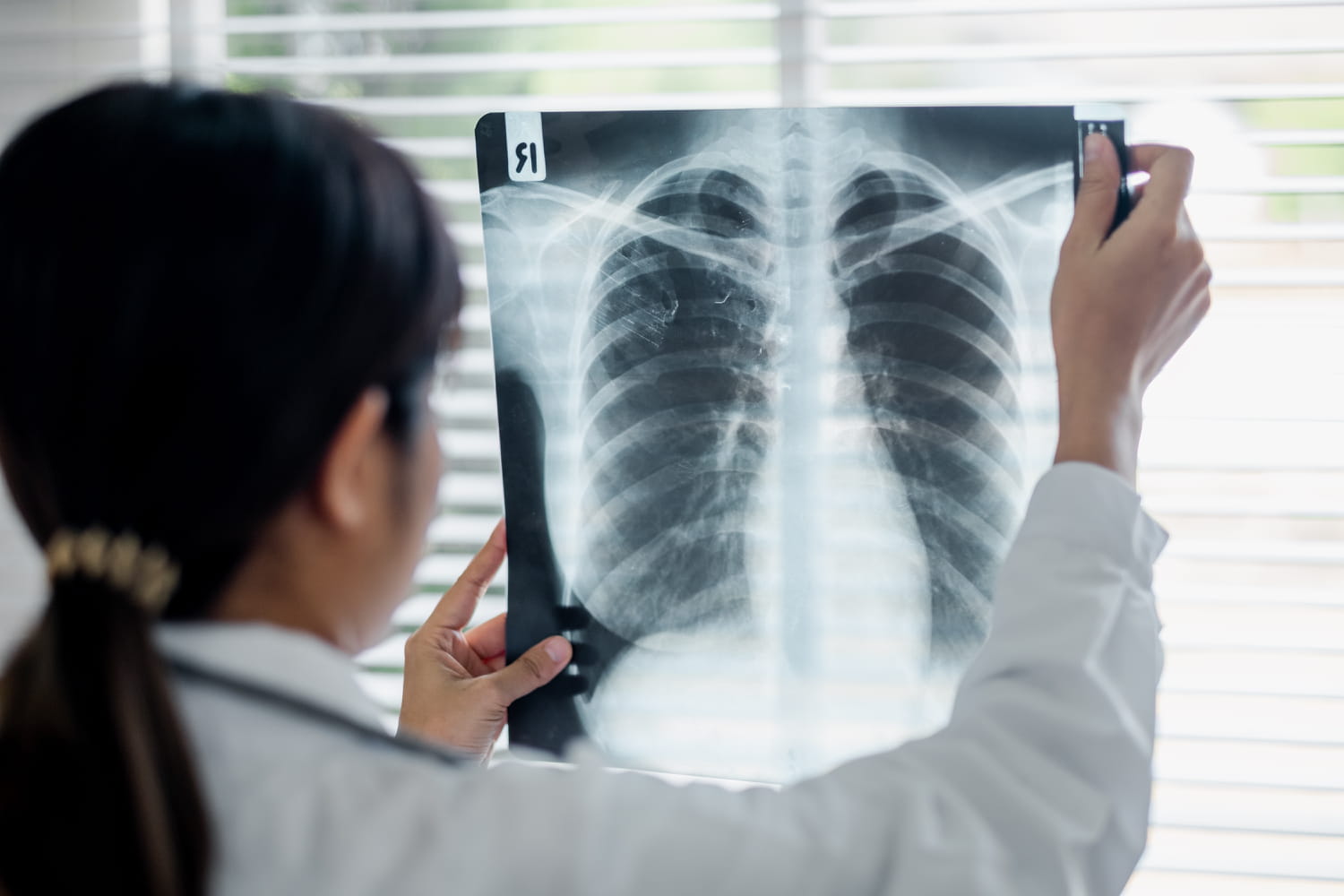Legionellosis is a serious bacterial infection that affects the lungs.
Nearly 2,000 cases of legionellosis are identified each year in France. 10% of patients die. “This fairly rare pneumonia is considered potentially serious and often leads to resuscitation”underlines Dr. Pierre Abgueguen, head of the infectious and tropical disease department and internal medicine at the CHU d’Angers. It is caused by a bacteria present in warm or hot water and in air conditioning. Adults with risk factors (advanced age, smoking, chronic respiratory diseases, diabetes, immune diseases, immunosuppressive treatments) are more affected.
Definition: What is legionellosis?
Legionellosis is a serious pulmonary disease caused by the bacteria Legionella pneumophila. It was discovered in 1976 at 182 participants from 58e Congress of the American Legion in Philadelphia, 29 of whom died. This is why legionellosis is also called “legionary disease”. The bacteria had spread by the air conditioning system of their hotel. It is a compulsory declaration disease that requires rapid and suitable management.
Causes: How do you get legionellosis?
The LEGIONELLA PNEUMPHILA bacteria is present in the natural environment and can proliferate in artificial water sites, when the conditions for its development are met, particularly between 25 and 45 ° C. The Legionella develops particularly:
- in the condensation water of air conditioning systems,
- In lakes, rivers, muds
- in water distribution networks (hot water pipes …)
- In hot water, between 25 ° C and 45 ° C, and in stagnant waters, especially in swimming pools, whirlpools, jacuzzi or during showers.
- In the presence of tartar, corrosion of pipes (iron and zinc) and microorganisms contained in the biofilm.
The contamination is made by inhalation, whether it is the air breathed in a contaminated air -conditioned room or steam droplets during a hot shower, a spa, a swirl bath … On the other hand, the bacteria is not transmitted from man to man. A person who has legionellosis is therefore not contagious for those around him. He doesn’t need to isolate himself.
Can we catch legionellosis by air conditioning?
If they are badly or insufficiently maintained, air conditioning and water distribution systems are a risk of legionellosis. Indeed, stagnant and hot water (between 25 and 45 ° C) promotes the proliferation of the LEGIONELLA bacteria.
What temperature to kill the Legionella?
The Legionella is a bacteria which ceases to multiply below 20 ° C and above approximately 45 ° C. They can be destroyed in a few hours at 55 ° C, in a few minutes at 60 ° C and instantly at 70 ° C.
How long is the LEGIONELLA incubation?
The incubation period is generally between 2 and 10 days.
What are the symptoms of legionellosis?
At first :
- headache (headache)
- muscle and abdominal pain
- diarrhea,
- Dry cough.
- General fatigue (state of discomfort)
- Strong fever (up to 41 ° C).
In a few days, fever is intensifying, muscle pains exacerbate while the first respiratory symptoms like those of pneumonia appear: pneumonia: pneumonia: pneumonia: pneumonia:
- A difficulty in breathing.
- A cough with little expectoration.
In the absence of treatment, the disease can quickly degenerate, the symptoms worsening very quickly, until the patient’s death, especially in subjects at risk.
The doctor starts first with an interrogation and auscultation of the patient who will suggest pneumopathy. To confirm this diagnosis, he practices different exams:
- Expectoration or liquid analysis collected by bronchial endoscopy.
- An antigenuria: search for the specific antigen of the Legionella in the urine. “”Please note, the antigenuria only works in LEGIONELLA PNEUMPHILA infections of serogroup 1 (the most frequent) “nuances our interlocutor.
- A pulmonary radiography (which reveals an infectious home that appears in the form of a white spot).
What treatment in case of legionellosis?
“”Given the potential severity of infection, antibiotic treatment is essential and as early as possible, any delay in treatment that can be detrimental to the patient“, Note Dr. Abgueguen. If this diagnostic period is short, treatment with antibiotic or antibiotic therapy, is recommended by intravenous route, which generally ensures fairly rapid healing. Even if the symptoms have disappeared and the patient ensures that you get better, it is essential to carry out treatment. If the time is longer, certain vital functions may be in danger sick.
- Pour cold water and hot water at least 1 time a week at the water points which are little used (sink, sinks, shower, etc.);
- Pour cold water and hot water after each period of prolonged absence, for all water points before reusing them (especially the shower);
- Monitor hot water temperature at home: it must be very hot but not “boiling” (at least 50 ° C and at most 60 ° C at the level of the kitchen sink);
- Regularly proceed to the descaling and disinfection of the taps of taps (breeze-games, showers, etc.);
- Use sterile water for biomedical devices (cleaning and filling oxygen therapy or sleeping devices).
- Maintain regularly and/or disinfect air conditioning installations, drinking water distribution installations, aerorefrigerant towers
Thank you to Dr Pierre Abgueguen, head of the infectious and tropical disease department and internal medicine at the Angers University Hospital.










